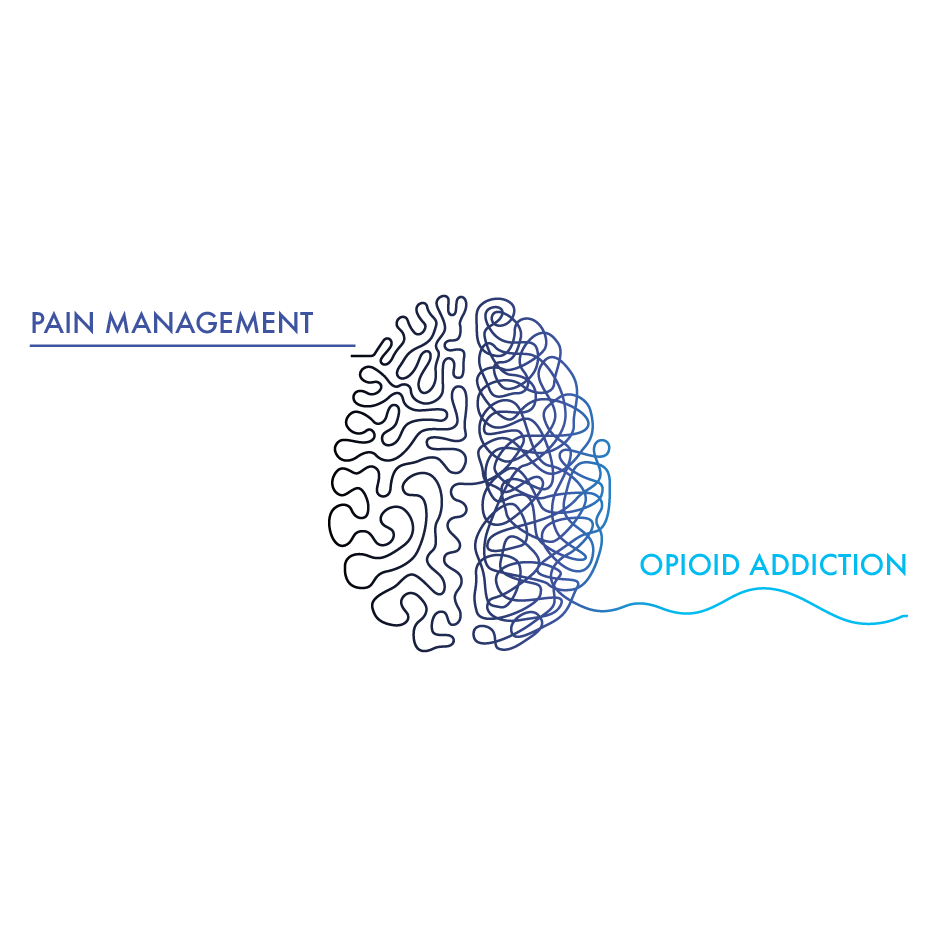But prescription opioids carry serious risks of addiction and death. The use of prescription opioids can lead to:
- A feeling of euphoria that makes them highly addictive
- Drug tolerance that drives a need to take more opioids to achieve the same pain relief
- Physical dependence that results in symptoms of withdrawl when the medication is stopped
- Respiratory depression, a life-threatening decrease In respiratory rate caused by opioid overdose or post-operative complications from anesthesia
Given the importance of opioids as the most effective analgesics for minimizing pain and suffering caused by many diseases, identification of safer therapeutic opioids with effective pain relief, diminished side effects and abuse potential is critical to breaking the vicious cycle fueling the Opioid Crisis.
• Opioids are our most effective painkilling medications
• Overdose from opioids is the leading cause of accidental death in the U.S.
The Opioid Crisis is a soluble—but tragically unfinished—problem.
Opioid Use Disorder (OUD) is a chronic disease that changes and rewires the brain, making it hard for people to quit, even when addiction is destroying their lives.
Studies have shown that people with OUD who follow detoxification with complete abstinence are very likely to either relapse or return to using the drug. A relapse can also be life-threatening, increasing the risk of a fatal overdose. Abundant evidence shows that opioid-based medicines, methadone (a full opioid agonist) and buprenorphine (a partial opioid agonist), are effective at helping patients maintain abstinence from opioids by reducing the negative effects of withdrawal and cravings without producing the euphoria that the original opioid caused.
Studies have shown that an estimated 50%–70% of opioid addicts would be capable of resuming a normal life with the partial opioid agonist, buprenorphine, but buprenorphine has substantial limitations:
- Prescribability crisis:
Only 20% of addicts seeking treatment are able to get prescriptions for buprenorphine, which has a narrow window of prescribability due to its liabilities - Dependency & tolerance:
Buprenorphine relieves cravings and does not generally lead to abuse, but it causes strong dependency and tolerance - High dosage required:
Buprenorphine is prescribed at 10X its analgesic dose in addicts - Dental problems:
Oral form may cause tooth decay, cavities, oral infections, & tooth loss
A therapeutic opioid for both effective pain management and Opioid Use Disorder that reduces addiction potential and the risk of respiratory depression would be a game-changing tool in the effort to end the Opioid Crisis.



